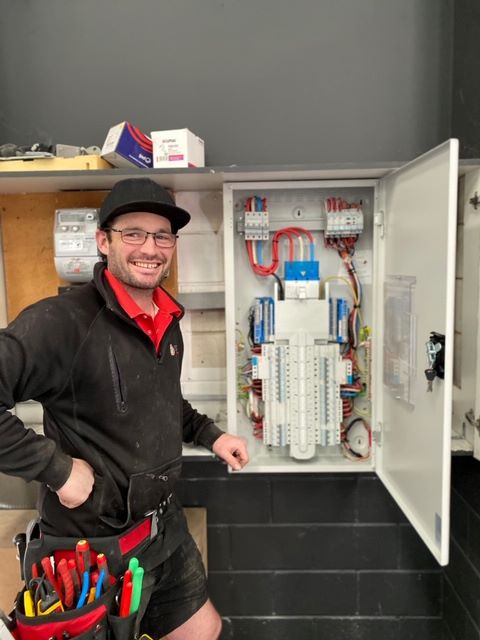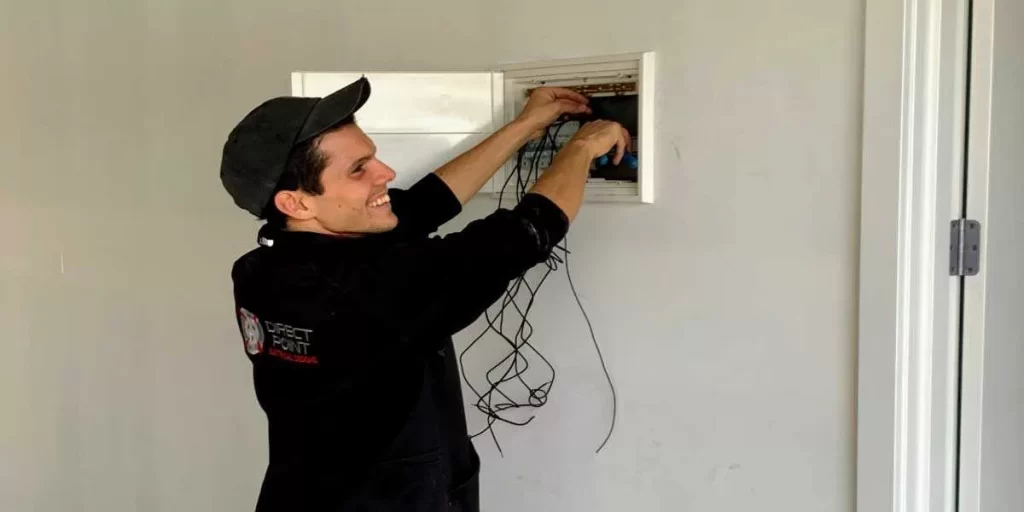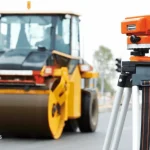When embarking on electrical installations for your home or commercial property, a common inquiry arises regarding the necessity of a main breaker in a sub panel. This concern typically surfaces as property owners explore options to expand their electrical systems or introduce new circuits to meet escalating power demands.
Generally, a sub panel does not require a main breaker, as it derives power from the main panel which is already equipped with a main breaker to regulate the overall power supply. The breaker in the main panel functions as the primary disconnect for the entire electrical system, encompassing all sub panels. Nevertheless, certain local electrical codes or unique installation prerequisites may necessitate a main breaker in sub panels for enhanced safety or operational convenience.
Even though it’s not a standard requirement, incorporating a main breaker into your sub panel can yield several advantages. It allows for a swift and straightforward method to cut power to all circuits within that specific panel without disrupting the entire electrical system. This feature can prove particularly beneficial during maintenance tasks or emergencies, enabling you to isolate sections of your property’s electrical network safely.

Explore the Essential Functions of Sub Panels
Sub panels are integral components of electrical systems, facilitating the distribution of power to specific areas or appliances within a property. They contribute to improved control and organization of circuits while enhancing the overall capacity to accommodate electrical loads.
Defining Sub Panels: Their Importance and Function
A sub panel, often referred to as a subsidiary panel or distribution board, serves as an additional electrical panel that branches off from the main electrical panel. Its primary function is to act as a secondary distribution point for electricity throughout a building. Sub panels are typically installed to:
- Enhance circuit capacity for various applications.
- Isolate power supply to specific areas or equipment.
- Facilitate better organization of the electrical system.
Common locations for sub panels include garages, workshops, or expansive homes where the main panel may be situated far from certain areas that require power. They enable more efficient power distribution and simplify circuit management, making it easier for property owners to access and control their electrical infrastructure.
Key Considerations for Electrical Load when Installing a Sub Panel
Before installing a sub panel, it’s crucial to assess the electrical load requirements meticulously. Important factors to consider include:
- The total amperage required for the designated area or equipment.
- The number and types of circuits that will be necessary.
- The distance from the main panel to the sub panel location.
Calculating the anticipated load is essential to ensure that the sub panel can safely accommodate it. Typically, sub panels are available in capacities ranging from 60 to 200 amps, depending on their intended use. Matching the capacity of the sub panel to your specific electrical needs is vital for efficiency and safety.
Furthermore, it’s advisable to consider potential future expansions when determining the size of your sub panel. This proactive approach can save time and costs in the long run, as it will prevent the necessity for upgrades or replacements as your electrical demands evolve.

Crucial Factors for Sub Panel Installation
Ensuring a safe and effective installation of a sub panel involves several critical considerations regarding circuit breakers, adherence to regulatory standards, and implementing necessary safety measures. Understanding these installation requirements is vital for creating a safe and compliant electrical system.
Evaluating the Need for Circuit Breakers in Sub Panels
While sub panels do not always necessitate a main breaker, the requirement can vary based on specific factors:
- The distance from the main panel: If the sub panel is significantly distanced from the main panel, a local disconnect may be essential.
- The number of circuits: Sub panels with more than six breakers typically require a main breaker for safety.
- Local codes: Some jurisdictions mandate main breakers in all sub panels.
A main lug sub panel depends on the main breaker from the main panel for overcurrent protection, which is a common arrangement when the sub panel is located near the main electrical panel.
Understanding Regulatory Standards for Sub Panel Installations
In Australia, specific electrical standards govern the installations of sub panels:
- AS/NZS 3000: This standard outlines the comprehensive requirements for electrical installations.
- Maximum rating: Main breakers for sub panels must not exceed the ampacity of the feeder conductors.
- Labelling: Clear identification of the power source for the sub panel is mandatory.
Adhering to these standards is essential for ensuring safety and legal operation. It's highly recommended to consult local authorities for particular regional requirements, and remember that all electrical work must be conducted by a licensed electrician to ensure compliance and safety!

Implementing Essential Safety Measures for Sub Panel Installations
It is crucial to implement robust safety measures during sub panel installations to mitigate risks:
- Proper grounding: Ensure that the sub panel is adequately grounded to mitigate the risk of electrical shocks.
- Adequate spacing: Maintain sufficient clearance around the panel to facilitate easy access and ventilation.
- Weatherproofing: For installations located outdoors, utilize weather-resistant enclosures to protect against moisture and environmental factors.
Additionally, it’s imperative to use the correct wire sizes and types tailored to the expected load. Installing arc fault circuit interrupters (AFCIs) and ground fault circuit interrupters (GFCIs) in accordance with code requirements is also essential.
Regular inspections and maintenance of the electrical installation contribute significantly to ongoing safety and compliance. Always engage a licensed electrician for sub panel installations to ensure that all safety standards are rigorously adhered to.
Common Inquiries About Sub Panels and Main Breakers
The complexities surrounding sub panels, including considerations about breakers, sizing, and regulations, can be overwhelming. Gaining a clear understanding of the essential requirements is crucial for ensuring a safe and compliant electrical setup.
Is it essential for a sub panel to include a main breaker?
A sub panel does not necessarily require a main breaker. The necessity largely depends on its location and local electrical codes. If the sub panel is situated within the same building as the main panel, a main breaker is typically not needed.
However, if the sub panel resides in a separate structure, it generally must have a main breaker for safety and compliance reasons.
Can a main breaker panel function as a sub panel?
Yes, a main breaker panel can be utilized as a sub panel, but it may not always be the most efficient option. In this scenario, the main breaker would act as an additional disconnect point rather than serving as the primary disconnect.
Choosing a panel specifically designed as a sub panel is often more cost-effective and space-efficient.
What size breaker is appropriate for a 100 ampere sub panel?
For a 100 ampere sub panel, it is standard to use a 100 ampere breaker in the main panel to feed it. This breaker should align with the sub panel's rating to ensure optimal protection and functionality.
Furthermore, the wire size must also be suitable for handling a 100 ampere load.
What regulations govern electrical sub panels?
Electrical sub panel regulations can vary by region, but they primarily focus on safety and accessibility. Key regulations typically include:
- Proper grounding and bonding procedures.
- Correct wire sizing to handle anticipated loads.
- Adequate spacing around the panel to ensure accessibility.
- Clear labelling of all circuits within the panel.
Always refer to local codes and consider professional installation to ensure full compliance with all regulations.
What is the capacity limit for a sub panel connected to a 200 ampere main panel?
A sub panel linked to a 200 ampere main panel does not come with a fixed capacity limitation. The size of the sub panel is contingent on:
- The available capacity in the main panel.
- The intended load requirements for the sub panel.
- The wire size utilized between the panels.
It is feasible to install a 100 or 150 ampere sub panel, provided that the main panel has sufficient spare capacity to support it.
How does one accurately size a breaker for a new sub panel installation?
To effectively size a breaker for a new sub panel, follow these steps:
- Calculate the total load that the sub panel will need to support.
- Select a panel that is rated for that load or higher.
- Choose a breaker in the main panel that aligns with the sub panel’s rating.
It is prudent to consider future expansion needs when sizing the panel. Often, installing a slightly larger panel than what is currently required can provide additional flexibility for future electrical demands.



It’s interesting how the decision to include a main breaker in a sub panel can spark such varied opinions. In my own experience, while working on my home renovation, I opted for a main breaker in the sub panel primarily for peace of mind. It provides an extra layer of safety, especially when the space is used for multiple high-demand appliances. I can easily disconnect everything with one switch, which has been a lifesaver during maintenance.
This topic of sub panels and main breakers is crucial, especially as our homes and businesses become increasingly reliant on electrical systems. I appreciate how you highlighted that a sub panel generally doesn’t require its own main breaker since it draws power from the main panel. However, I find it fascinating how local codes can diverge on such matters. A friend of mine in a nearby town had to install a main breaker in their sub panel due to specific zoning regulations, which not only added safety but also gave them peace of mind when running their home workshop.
Your insights on the necessity of a main breaker in a sub panel are spot on and really highlight the nuances of electrical installations. I find it fascinating how the conversation around these technical aspects often intersects with safety and practicality. For homeowners, especially those looking to expand their electrical capacity, understanding these details can make a significant difference in both safety and convenience.
You’re touching on something that really resonates with many homeowners who are navigating the complexities of electrical installations. The relationship between safety and practicality in these discussions is crucial. When considering an expansion of electrical capacity, people often want to add more outlets or maybe even upgrade to accommodate new appliances, but those decisions must be rooted in a solid understanding of the underlying electrical system.
It’s great to see your appreciation for the complexities of electrical installations. You’re right—when homeowners think about expanding their electrical capacity, understanding the role of a main breaker in a sub panel can really change the way they approach their projects.
Your insight into the role of main breakers in sub panels is a valuable addition to the conversation about electrical safety and efficiency. I find it particularly interesting how local codes can dictate the necessity for a main breaker, which can vary so much from one area to another. It’s a reminder that while basic electrical concepts are often universal, practical applications can be deeply influenced by regional standards and practices.
It’s interesting you bring up the variance in local codes regarding main breakers in sub panels. It really highlights how electrical safety isn’t just a technical matter; it’s also shaped by the values and priorities of different communities. I remember reading about how stringent codes in certain regions were influenced by historical events, like major electrical fires or natural disasters. These influences can lead to stricter guidelines that prioritize safety in ways unique to that area.
I appreciate your take on electrical safety; it really aligns with what I found in a recent article about emergency electrician services in Melbourne’s West, which also highlights how regional codes can shape practical applications in safety measures.
‘Emergency Electrician Services: Your Guide for Melbourne’s West’
https://writebuff.com/emergency-electrician-services-your-guide-for-melbournes-west/.
I completely agree with you about the complexity that local codes introduce into electrical systems. It’s fascinating how something as technical as main breakers in sub panels can be influenced by regional practices and regulations. This variation really highlights the importance of understanding not just the hardware itself, but also the context in which it operates.
You bring up an interesting point about the impact of local codes on electrical systems. It’s true that region-specific practices can shape how we approach even the most fundamental elements, like main breakers in sub panels. It makes me think about how similar principles apply in other fields, such as plumbing or building construction, where local climate and cultural practices inform regulations and techniques.
You’re spot on about those regional differences. It’s fascinating how much local culture and environment can shape everything from the way we wire a house to how pipes are installed. For instance, in areas with heavy snowfall, you’ll often see roofs designed to handle that load, while warmer climates might prioritize ventilation differently.
You’ve touched on a crucial aspect of electrical installations that often gets overlooked until it becomes a pressing issue. I find that the conversation around main breakers in sub panels really reflects a broader theme of safety and efficiency in our modern lives. For instance, when my family renovated our home, we initially thought about adding a sub panel without a main breaker. However, after speaking to our electrician, we decided to include one for the convenience of quickly shutting off power during maintenance. It turned out to be a smart move!
This is an intriguing discussion on the nuances of electrical installations, particularly regarding the role of main breakers in sub panels. It’s essential to balance safety with practicality in electrical design, and your points highlight this well.
I never thought I’d be so invested in the saga of sub panels and main breakers, but here we are! It’s like a family drama where everyone just wants to get along, but occasionally someone needs to step in and manage the chaos. I mean, think about it—a main breaker in your sub panel is like having an emergency stop button for that time Cousin Ed decided to throw a wild dance party at your housewarming. Who wouldn’t want a quick way to cut the lights if things got too out of hand?
It’s interesting how the conversation around main breakers in sub panels highlights not only the technical aspects but also the broader implications of safety and efficiency in electrical installations. I recently upgraded my home’s electrical system, and while I hadn’t considered adding a main breaker to the sub panel, after reading your post, I see the value in that option. It isn’t just about compliance; it’s also about peace of mind.
You’ve touched on a really important point. When we talk about main breakers in sub panels, it extends beyond just wires and voltage; it’s about creating a safer living environment. I think many of us don’t realize how these small choices in our electrical systems can profoundly affect our daily lives.